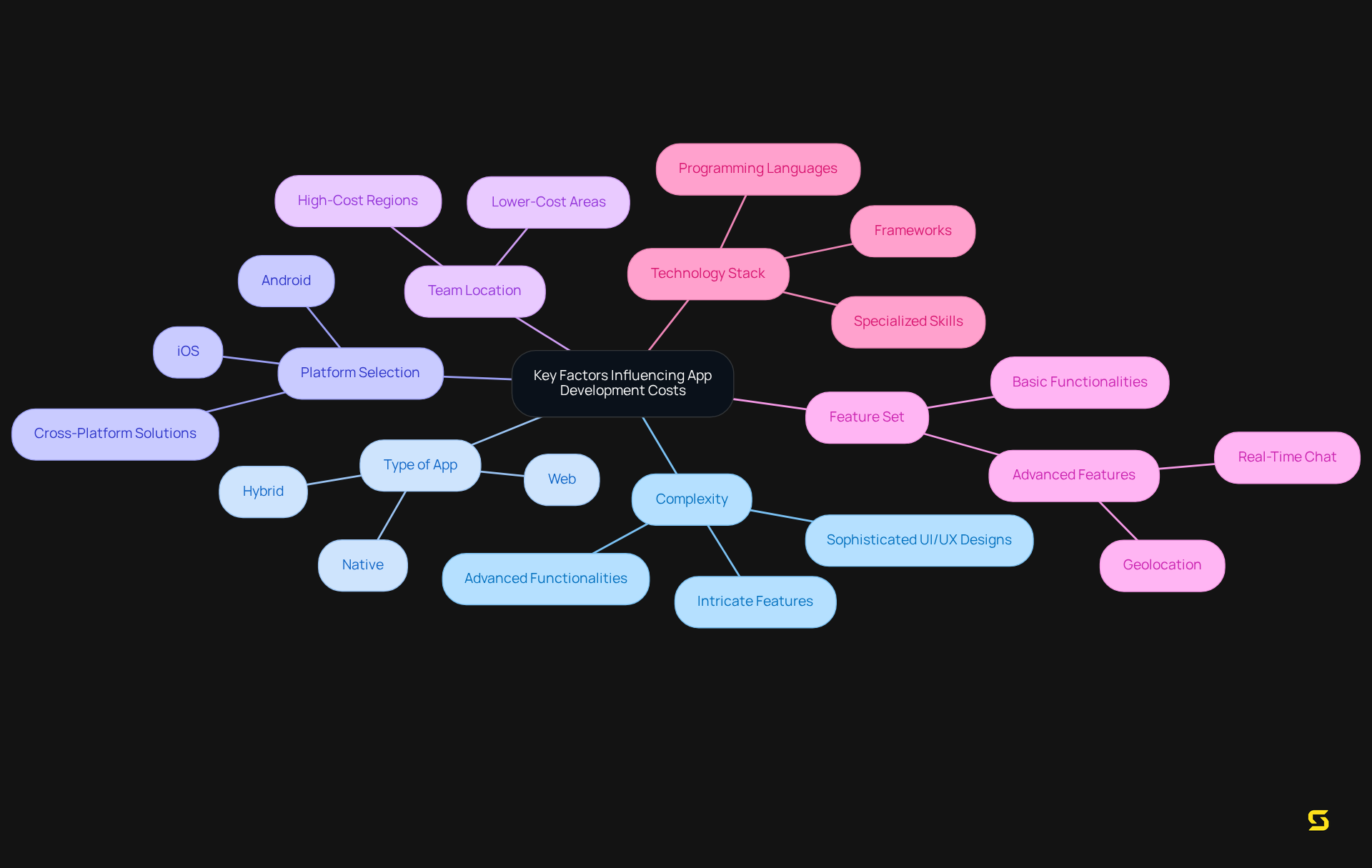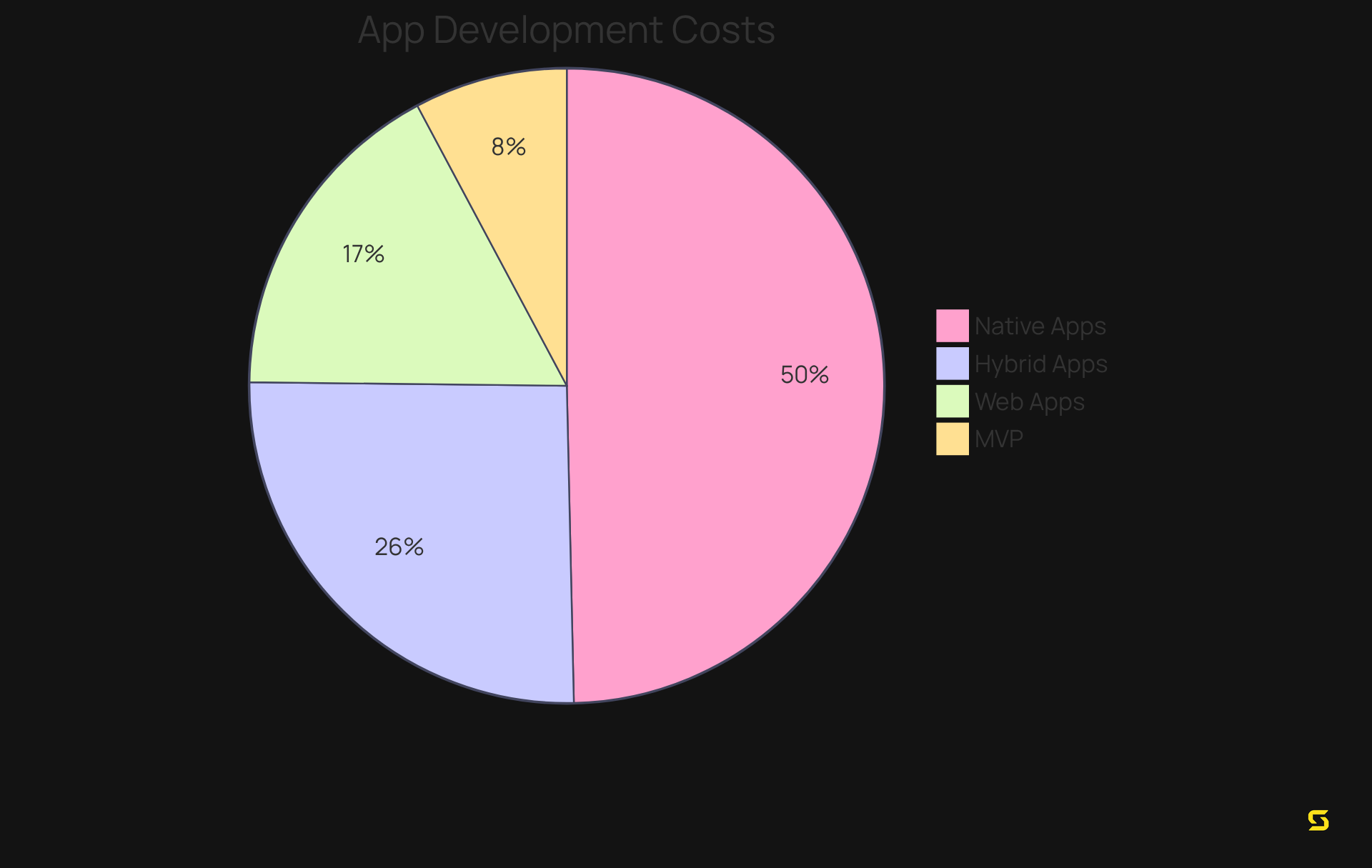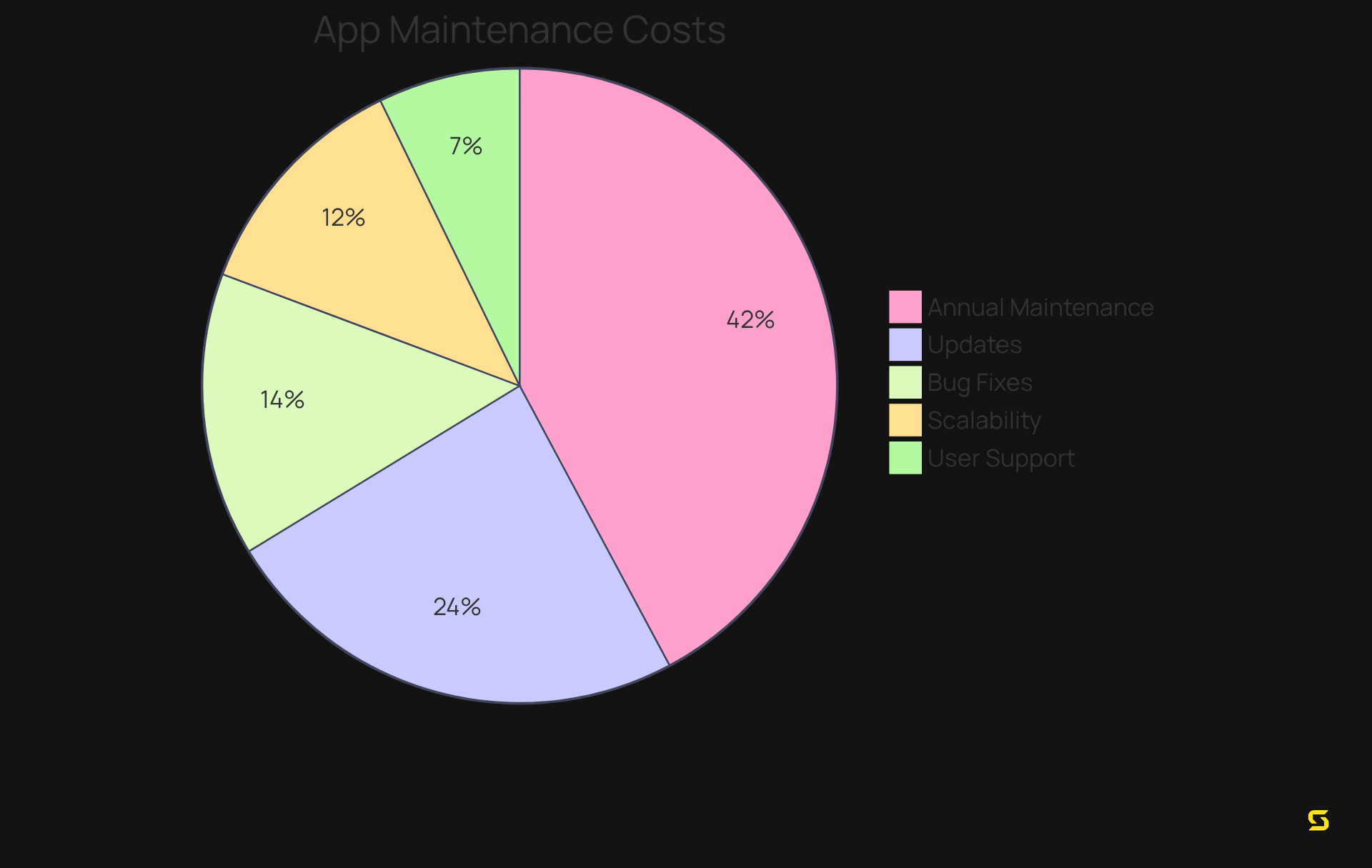Overview
This article delineates the essential factors that influence app building costs, asserting that:
- The complexity of the app
- Its type—be it native, hybrid, or web
- The choice of platform
- The location of the development team
- The feature set
- The technology stack
are pivotal in determining overall expenses. Detailed cost breakdowns for various app types and considerations for ongoing maintenance substantiate this assertion, effectively illustrating how each factor contributes to the financial investment required for app development.
Introduction
Navigating the landscape of app development presents significant challenges, particularly in grasping the associated costs. Numerous factors influence the final price—ranging from the type of app and platform selection to the geographical location of the development team.
Businesses must strategically evaluate their options to make informed decisions. This article explores the intricacies of app building costs, shedding light on how complexity, feature sets, and ongoing maintenance can significantly affect budgets.
As the demand for innovative applications escalates, how can developers and businesses ensure they are making sound financial choices in this rapidly evolving market?
Key Factors Influencing App Development Costs
The greater the complexity of an app, the higher the app building costs will be associated with its creation. This encompasses intricate features, advanced functionalities, and sophisticated UI/UX designs.
-
Type of App: Different categories of applications, such as native, hybrid, and web, feature varying pricing structures. Native applications typically require a higher investment, which contributes to increased app building costs due to their platform-specific development.
-
Platform Selection: Developing for multiple platforms, including iOS and Android, elevates costs. While cross-platform solutions can reduce app building costs, they may introduce trade-offs in performance.
-
Team Location: The geographical location of the development team significantly influences expenses. Developers situated in high-cost regions tend to have increased app building costs compared to those in lower-cost areas.
-
Feature Set: The number and complexity of features directly affect the budget. Basic functionalities are generally more affordable, whereas advanced features, such as real-time chat or geolocation, can substantially increase app building costs.
-
Technology Stack: The choice of technology, including programming languages and frameworks, can impact both development time and expenses. Certain technologies may require specialized skills, which can increase app building costs.
Continuous maintenance and support, along with app building costs, should be factored into the budget, as they can represent a significant portion of the overall expenses over time.

Cost Breakdown by App Type and Platform
-
Native Apps: Development costs for native applications are significant, with iOS development typically ranging from $50,000 to $300,000, depending on complexity. Similarly, Android development expenses can vary from $50,000 to $250,000. These figures underscore the app building costs required for high-quality native app development.
-
Hybrid Apps: Generally, hybrid applications present a more cost-effective solution than their native counterparts, with development costs ranging from $30,000 to $150,000. While hybrid apps can reduce both development time and app building costs, it is important to note that their performance may not always match that of native applications.
-
Web Apps: The development costs for web applications typically range from $20,000 to $100,000, influenced by features and complexity. Although they are often more economical, web apps may not deliver the same user experience as native apps, which is a crucial consideration for businesses when assessing app building costs.
-
MVP (Minimum Viable Product): A basic MVP can be developed for as low as $5,000 to $50,000, focusing on core functionalities to test market viability. This strategic approach enables startups to enter the market quickly and cost-effectively, helping them to manage app building costs while allowing for rapid feedback and iteration.

Understanding Long-Term Costs: Maintenance and Updates
-
Annual maintenance costs typically range from 15% to 20% of the app building costs per year. For example, if an app requires $100,000 to create, you should anticipate that the app building costs will involve budgeting between $15,000 and $20,000 each year for upkeep.
-
Updates and Upgrades: Regular updates are essential to ensure the app remains functional and secure. The costs for these updates can vary, but it is common to budget between $5,000 and $15,000 per update.
-
User Support: Providing user support can significantly contribute to ongoing costs. Depending on the volume of users, this could range from $1,000 to $5,000 monthly.
-
Bug Fixes and Performance Optimization: Allocating funds for bug fixes and performance enhancements is crucial for maintaining app quality. This expense can range from $2,000 to $10,000 each year, depending on the app's complexity and user feedback.
-
As your user base expands, app building costs may increase due to additional expenses for server capacity, data storage, and performance optimization. It is essential to budget for scalability to effectively accommodate growth.

Conclusion
The exploration of app building costs reveals that various factors significantly influence the overall expenses associated with app development. Understanding these elements is crucial for businesses and developers alike as they navigate the complexities of creating a successful application. From the type of app and platform selection to the geographical location of the development team, each aspect plays a vital role in determining the financial commitment required.
Key insights from the article highlight the stark differences in costs between native, hybrid, and web applications, with native apps generally requiring the highest investment. Furthermore, the importance of ongoing maintenance and updates cannot be overstated, as these expenses represent a substantial portion of the total cost over time. By budgeting effectively for initial development and long-term upkeep, stakeholders can better manage their resources and expectations.
Ultimately, a comprehensive understanding of app building costs empowers entrepreneurs and developers to make informed decisions. As the app market continues to evolve, staying abreast of these financial dynamics will be essential for achieving success in a competitive landscape. Whether launching a minimum viable product or a fully-featured application, careful planning and consideration of all cost factors will pave the way for sustainable growth and user satisfaction.
Frequently Asked Questions
What factors influence app development costs?
Key factors include the complexity of the app, type of app (native, hybrid, or web), platform selection, team location, feature set, and technology stack.
How does the complexity of an app affect its development costs?
The greater the complexity of an app, including intricate features and advanced functionalities, the higher the associated building costs.
What types of apps have different pricing structures?
Native, hybrid, and web applications have varying pricing structures, with native applications typically requiring a higher investment due to platform-specific development.
How does platform selection impact app development costs?
Developing apps for multiple platforms, such as iOS and Android, increases costs. Cross-platform solutions can reduce costs but may affect performance.
How does the location of the development team affect costs?
The geographical location of the development team significantly influences expenses, with developers in high-cost regions typically charging more than those in lower-cost areas.
What role does the feature set play in app development costs?
The number and complexity of features directly affect the budget, with basic functionalities being more affordable and advanced features, like real-time chat or geolocation, increasing costs.
How does the technology stack influence app development expenses?
The choice of technology, including programming languages and frameworks, can impact development time and costs, especially if specialized skills are required.
Should continuous maintenance and support be considered in the budget?
Yes, continuous maintenance and support should be factored into the budget, as they can represent a significant portion of overall expenses over time.





